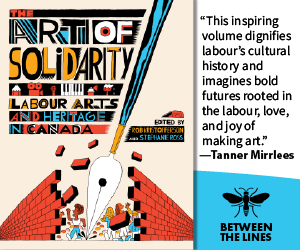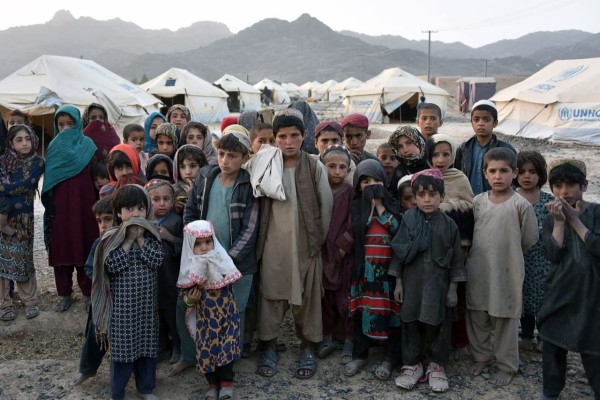Correcting the record on Bill Graham and the Iraq War
Canada was very much ‘involved’ in the invasion of Iraq and the War on Terror—and Graham staunchly defended this role

Bill Graham, former Canadian defence and foreign affairs minister, died at the age of 83 on August 8.
With the recent death of former Liberal Defence and Foreign Affairs Minister Bill Graham, has come a gush of praise for how he “resisted American arguments” and “stayed out” of the invasion of Iraq. This is a significant revision of history.
Graham’s obituary in the Globe and Mail describes him as “a loyal and effective minister, supporting [former prime minister Jean] Chrétien in his decision not to involve Canada in the American-led war in Iraq.”
The reality is that Canada was very much “involved” in the invasion of Iraq and the “War on Terror” more generally—and Graham staunchly defended this role.
Operation Apollo
Graham was first-elected as an MP in 1997. He moved from the Standing Committee on Foreign Affairs and International Trade to his first cabinet position as minister of foreign affairs, in 2002.
Previously, in October 2001, NATO invoked Article 5. Then-Defence Minister Art Eggleton responded with Operation Apollo, readying 1,000 soldiers, the HMCS Halifax, the HMCS Vancouver, the HMCS Preserver and later the HMCS Iroquois to join Operation Enduring Freedom.
DND’s 2002-03 report says of Operation Apollo: “Nearly every part of the organization contributed to this effort. Despite the significant resource and operational tempo demands of this operation, and other ongoing commitments, the Canadian Forces continued to carry out its missions successfully.”
While the Canadian government had yet not publicly stated an intent to send ground forces, Canada did so, quietly but eagerly, as part of its joint operations with the United States.
US Ambassador to Canada, Paul Cellucci, recalled that Canada’s Defence Minister was almost “begging” to join the war: “I got a call on my cell phone from Art Eggleton during the build up in Afghanistan. The message was ‘We want to be part of this.’”
For decades, NATO’s Canada-United States Regional Planning Group set up a “standing committee” to coordinate both countries military efforts, out of Washington. More recently, the 1994 White Paper on Defence endeavoured “to rely on the stability and flexibility of its relationship with the United States to help meet defence requirements in North America and beyond.” Alongside maintaining Canada’s existing Defence Production and Development Sharing Agreement with the US, it proposed to: “Maintain the ability to operate effectively at sea, on land, and in the air with the military forces of the United States in defending the northern half of the Western hemisphere. This includes plans for the provision of forces already tasked for other missions to the defence of the continent.” That meant coordinating “squadrons of fighter aircrafts,” airspace monitoring and a “Joint Task Force” headquarters.
Soon after Graham’s appointment to the foreign affairs file, photos revealed that Canada’s clandestine Joint Task Force II commandos were already working “hand in glove” with US forces in Afghanistan, including in a high-profile January 28 battle in Kandahar’s Mirwais Hospital.
Graham defended the secret deployment in his memoir, The Call of the World. While acknowledging “Most Canadians weren’t even aware we had Special Forces in Afghanistan until their presence was revealed in a newspaper photo,” Graham nonetheless maintained that “with any Special Operations, only those with a ‘need to know’ knew what their mission entailed. Secrecy is what makes them effective.”
Hardly a reluctant participant in US wars, Graham himself was, according to Janice Stein and J. Eugene Lang’s account, marked by his “excellent relationship with Colin Powell,” and his eagerness to join the “War on Terror.”
As foreign affairs minister, Graham was moreover eager to support Canada’s war efforts. “You [the Canadian forces] are the principal instrument of my policy,” Graham reportedly told then Defence Minister McCallum. “You, I and our staffs have to work together closely.”
US Army and Iraqi army soldiers board a helicopter during a static loading exercise being conducted to prepare for missions on Camp Ramadi, Iraq, November 15, 2009. Photo from Wikimedia Commons.
Iraq
On March 17, 2003, Prime Minister Chrétien told Parliament that Canada would not participate in the invasion.
However, that same day, a WikiLeaks cable noted, Canadian diplomats pledged their support for the invasion behind the scenes to US officials—in the foreign affairs headquarters in Ottawa, while Graham was minister.
The classified document stated: “While for domestic political reasons… the GOC [Government of Canada] has decided not to join in a US coalition of the willing… they are also prepared to be as helpful as possible in the military margins.”
At the meeting foreign affairs official James Wright (presumably under Graham’s direction) advised US officials that Canadian naval and air forces could also “discreetly” assist the US-led assault.
US ambassador Paul Cellucci remarked: “Ironically, the Canadians indirectly provide more support for us in Iraq than most of those 46 countries that are fully supporting us.”
In March 2003, the Globe and Mail noted:
For months, Canadian military planners have been working with US Central Command (USCENTCOM), which is masterminding the Iraq War. USCENTCOM used to be located at MacDill Air Force Base in Florida. On February 11, Canada disclosed that it had transferred 25 military planners from MacDill to the US military’s forward command post in Qatar in the Persian Gulf—the new command-and-control headquarters. The role they play is far more significant than having a few soldiers fighting on the ground; Canadians have helped to determine the war’s strategy and are now helping to run it, from the inside.
In February 2003, Canada’s joint naval mission was further extended—deeper into the Persian Gulf and through the Strait of Hormuz, under the command of Canadian Commodore Roger Girouard. The Globe and Mail reported on the operation, Task Force 151, with the headline: Commander in Gulf ready for ‘Iraq option’.
McCallum acknowledged the TF 151 meant “protecting ships involved in the invasion of Iraq.”
In his memoir Graham recalled taking issue with the planning language, which tasked the Canadian personnel to “protect military operations” supposedly “irrespective of their mission.”
Indeed, according to the memoir, DND’s own legal team took the view “that we were technically ‘belligerent’ under international law, even though we hadn’t declared war, because we were in command of Task Force 151.”
Yet, Graham did not advise ending the operation.
“Our view was the naval operation dated from the original mission to restrain the Taliban and control Al-Qaeda and that therefore it was a legitimate presence in the Gulf for a different purpose,” he claimed.
Instead, he advised removing the phrase “irrespective of their mission”—merely stopping the Canadian forces from “engag[ing] directly in any attack” on Iraq.
Even while acknowledging this opened the government to “charges of duplicity,” Graham defended this decision too in his memoir, writing: “Continental defence and security, whether through NORAD or in the post 9/11 environment, are too important and too integrated to enable us to pull out of a commitment every time it’s politically inconvenient or intellectually inconsistent.”
The Canadian military also had personnel in Iraq.
According to CDS Henault, on the eve of the war Canada also had “about 100 officers and noncommissioned officers on exchange,” first in the US, then Kuwait and soon to be deployed to Iraq. Henault remarked: “Our men had become key to operations and to pull them out just when these units were moving into combat would have put large numbers of people at risk. It would have created a substantial hole in the decision making process.”
One of those stationed was future chief of defence staff, Walter Natynczyk. “General Natynczuk was there [In Iraq],” Graham said. “This was a very slender thread on which we hung.”
Soon, Natynczuk would become “deputy commander” of the coalition forces. Natynczyk told a foreign affairs committee in 2013:
“We arrived in Iraq in January 2004, and we thought we were on a peacekeeping stability mission. This became a combat operation after Easter of 2004, with operations in Fallujah and Sadr City. For that whole period, which was a peacekeeping stability operation that became a full-blown insurgency.”
In 2014, Natynczyk shed further light on his involvement in the destruction of Iraqi cities. Speaking on a treaty banning cluster munitions he let slip that he may have unwittingly facilitated the use of cluster bombs.
“I was deployed throughout 2004 as a deputy commanding general of a US-led multinational force in Iraq, while on exchange duties with the US Army,” Natynczyk said.
Having had the exchange experience as the deputy commanding general of the Multi-National Force—Iraq throughout 2004, l can say to you with confidence that l was never aware that cluster bombs were actually stocked in theatre or that I participated in planning for their use or, in fact, authorized their use. I had none of that experience whatsoever. However, unwittingly l could have done so, and l could have participated in activities, without my knowledge, that assisted in the use of cluster munitions, but l would not have known it at that time.
Natynczyk remained in Iraq until January 2005.
All told, Canada’s governor general announced subsequently: “From January 2004 to January 2005, Major General Natynczyk led the Corps’ 10 separate brigades, consisting of more than 35,000 soldiers stationed throughout the Iraq Theatre of Operations. He also oversaw planning and execution of all Corps level combat support and combat service support operations.”
Former Prime Minister Jean Chrétien visits Afghanistan under close protection courtesy of JTF-2, 2003.
Medusa, Hillier and Afghanistan
On January 8, 2003, as the US government prepared for the Iraq War, then Defence Minister McCallum met with Donald Rumsfeld to discuss freeing up those US soldiers who were “tied down” in Afghanistan.
McCallum said he thought the United States and Canada should “work together to bring ISAF under NATO, it would then become a collective responsibility,” and offered to take a leadership role.
McCallum recalled telling Rumsfeld, “If we did this we won’t have anything left for Iraq.” Rumsfeld, according to McCallum, concurred: “Yeah, I know that.”
During his time as foreign minister Graham described Afghanistan as “a non-issue.” As he became defence minister, he pressed ahead with the extension of the war in Afghanistan.
Ahead of the 2004 defence policy review, Graham replaced Canada’s chief of defence staff with Rick Hillier, who was previously in charge of the ISAF operation in Kabul.
The Globe remarked: “Mr. Graham successfully pitched to have General Rick Hillier made chief of the defence staff, supported the military’s push for a greater combat role in Afghanistan, and persuaded Mr. Martin and Finance Minister Ralph Goodale to increase defence spending.”
Hillier for his part, recalled:
What I did insist on was that a whole battle group should be sent to Kandahar along with a reconstruction team because two or three hundred Canadian soldiers in that team could make little impact on their own. If the security situation in Kandahar became dire, as indeed it did soon after our arrival, those soldiers would be stuck in vulnerable positions with no easy way to ensure their security.
Hillier proposed adopting the concept of the “three block war” from the American military to the war in southern Afghanistan—militarizing food and humanitarian aid, as part of a broader counterinsurgency war.
Leading into the war, Hillier recalls Graham promising: “We’re going to fight in the hills and make love in the cities. We’re going to make sure the population’s getting development and aid in the cities. We are going to make sure that the Taliban are going to be kept off balance and let the population start to rebuild their lives, families and communities with our assistance.”
However, Hillier’s knack for saying the quiet part loud—his excitement at the prospect of crushing “detestable murderers and scumbags,” and his clear insistence that the army exists “to kill people”—left Graham slightly uneasy.
Graham said of Hillier: “His comments about scumbags put the nature of the mission in a totally different light,” and made war tougher to sell.
Further, the campaign in southern Afghanistan, most notably Operation Medusa in September 2006, was enormously violent. “We antagonized the local population but we didn’t rout the Taliban,” one officer recalled. “We destroyed infrastructure, tore up villages.”
In a letter to the Toronto Star, Corporal Paul Demetrick recalled:
We respond to hostile fire by indiscriminate bombing and shelling of villages, killing innocent men, women and children; we fire white phosphorus shells (a chemical weapon outlawed by the Geneva Conventions due to the horrific way it burns human beings) into vineyards where it was known Afghan insurgents were deployed; we hand over prisoners of war to Afghan authorities, who torture them; and we shoot and kill a two-year-old Afghan boy and his four-year-old sister. Do we want to be remembered for hating, killing and destroying, or caring, healing and helping with reconstruction?”
Still, Graham defended the war well after the Liberals’ defeat.
“Operation Medusa defeated the Taliban in a large-scale battle that saved Kandahar and perhaps the whole country,” Graham wrote in his memoir. “If the war had stopped at that point, everybody might still be congratulating us on our intelligent and triumphant policy.”
While lamenting that “public support for the mission, which had been considerable in the wake of 9/11, eroded in the face of mounting casualties,” Graham defended the war itself, calling it a “mission to be proud of.”
The only problem, Graham insisted, was that the war wasn’t violent enough. Graham lamented that Canada underestimated the “scale, intensity, and duration of the fighting” and that “NATO failed to get other partners to take their turn in a full combat role.”
When the war was up for review, Graham was interim Liberal leader and he insisted the party’s caucus vote in favour, saying: “I do understand one thing: if we vote against this motion, Canadians are going to look at us and wonder what kind of chumps would flip-flop on such an important issue.”
Mitchell Thompson is a writer, editor and occasional radio producer based in Toronto.










